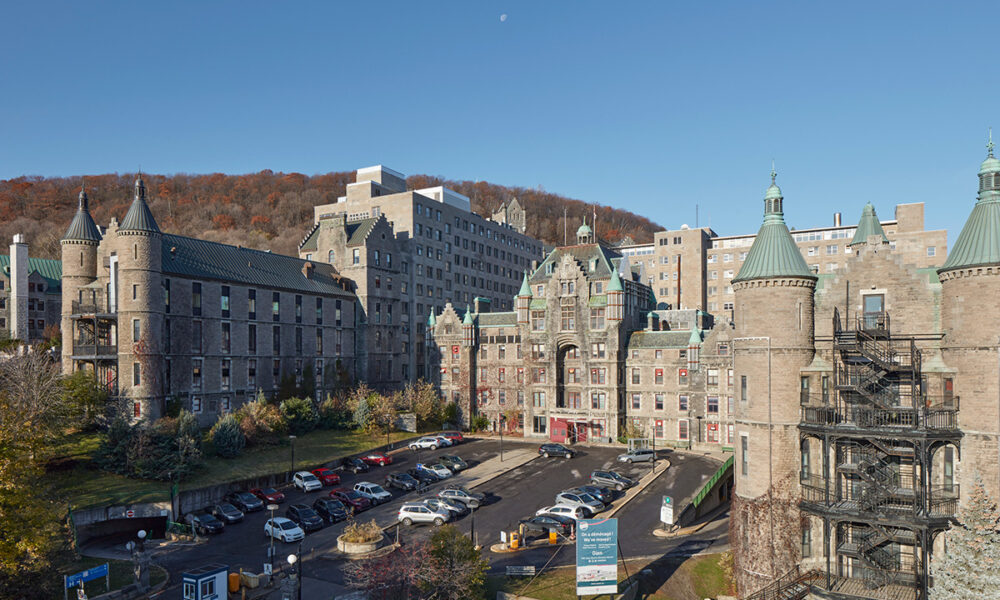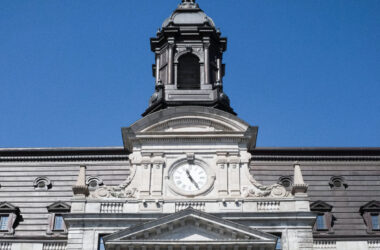In 2016, McGill contracted private archaeology firm Arkéos to survey the Royal Victoria Hospital site—a necessary step in planning construction at the New Vic. The New Vic is a part of McGill’s Master Plan, an ambitious project to renovate certain buildings in the Royal Victoria Hospital complex. The McGill administration wanted Arkéos to establish whether construction at the site would destroy any cultural artifacts. Neither Arkéos nor McGill, however, sought the permission of or collaborated with, territorial custodians, the Kanien’kehà:ka, for this survey. This failure deteriorated an already tense relationship between the Kanien’kehà:ka and McGill, highlighting how the university remains actively anti-Indigenous. Proceeding with the survey and construction without consent is profoundly unethical and disregards Kanien’kehà:ka sovereignty and right to self-determination.
On Aug. 26, the Kanien’kehà:ka Kahnistensera filed an injunction in Quebec’s courts to prevent construction at the New Vic which is set to begin in early October. Despite the lawsuit against McGill (which has since been dropped), construction plans have not been altered. The area to be excavated, between the Hersey Pavilion and Avenue Des Pins Ouest, was deemed archaeologically important by Arkéos, requiring further investigation into its significance. The Kanien’kehà:ka Kahnistensera assert that this site contains unmarked graves of Indigenous children, forensic evidence of MK-Ultra, and cultural artifacts.
For centuries, settler archaeologists freely conducted fieldwork on Indigenous lands. Often, they removed Indigenous ancestors and their belongings from their resting places without consent, gaining a reputation as grave robbers. Archaeologists rejected Indigenous sovereignty by declaring that they themselves were the stewards of Indigenous pasts. Indigenous peoples were reduced to scientific objects and painted as primitive and inferior to European settlers. These attitudes persist and continue to influence how settlers see and interact with Indigenous peoples today.
In recent years, it has become increasingly common for archaeologists in Canada to work for or in collaboration with Indigenous nations. In 2015, The Truth and Reconciliation Commission stated the importance of collaborative archaeology in their 94 Calls to Action. Both the Canadian Archaeological Association’s Principles of Ethical Conduct and l’Association des archéologues du Québec’s Code of Ethics affirm the necessity of working ethically with Indigenous peoples. Ethical collaboration entails consultation, partnerships, and Indigenous leadership.
The Arkéos survey, however, is not an example of collaborative archaeology. Nowhere in the report is it stated that Indigenous peoples were involved. Maps of the site, environmental data, and a historical account written by failed colonizer Jacques Cartier are the only sources used to pinpoint which parts of the Royal Vic may contain cultural remains. Arkéos did not consider Indigenous oral histories, implying that only European perspectives count as valid evidence. Additionally, the report confines Indigenous presence to ancient “Paleoindian” periods, ignoring post-Contact Indigenous inhabitants and descendants. The archaeologists acknowledge burials, but only in a prehistoric context. This means that concerns raised by the Kanien’kehà:ka Kahnistensera, who firmly assert the presence of modern unmarked graves at the Royal Vic, remain unaddressed.
McGill is disrespecting the authority of the Kanien’kehà:ka Kahnistensera as clan mothers. The Kanien’kehà:ka Kahnistensera are responsible for protecting the land and the ancestors. Instead of seeking consent for this archaeological survey, collaboration was an afterthought for the McGill administration, who only started consulting Indigenous peoples, notably the Mohawk Council of Kahnawake (MCK), about the New Vic project in late 2021. The MCK, however, answers to Indigenous and Northern Affairs and the Prime Minister of Canada, so they lack the authority that the Kanien’kehà:ka Kahnistensera have over this land.
Construction must stop until the presence of unmarked graves at the Royal Vic is investigated to the satisfaction of the Kanien’kehà:ka Kahnistensera. The McGill administration must agree to meet on the Kahnistensera’s terms and apologize for the harm they caused. Beyond hollow words and vague action points, the university needs to acknowledge that it occupies unceded Indigenous territory, of which the Kanien’kehà:ka Kahnistensera are rightful custodians.









